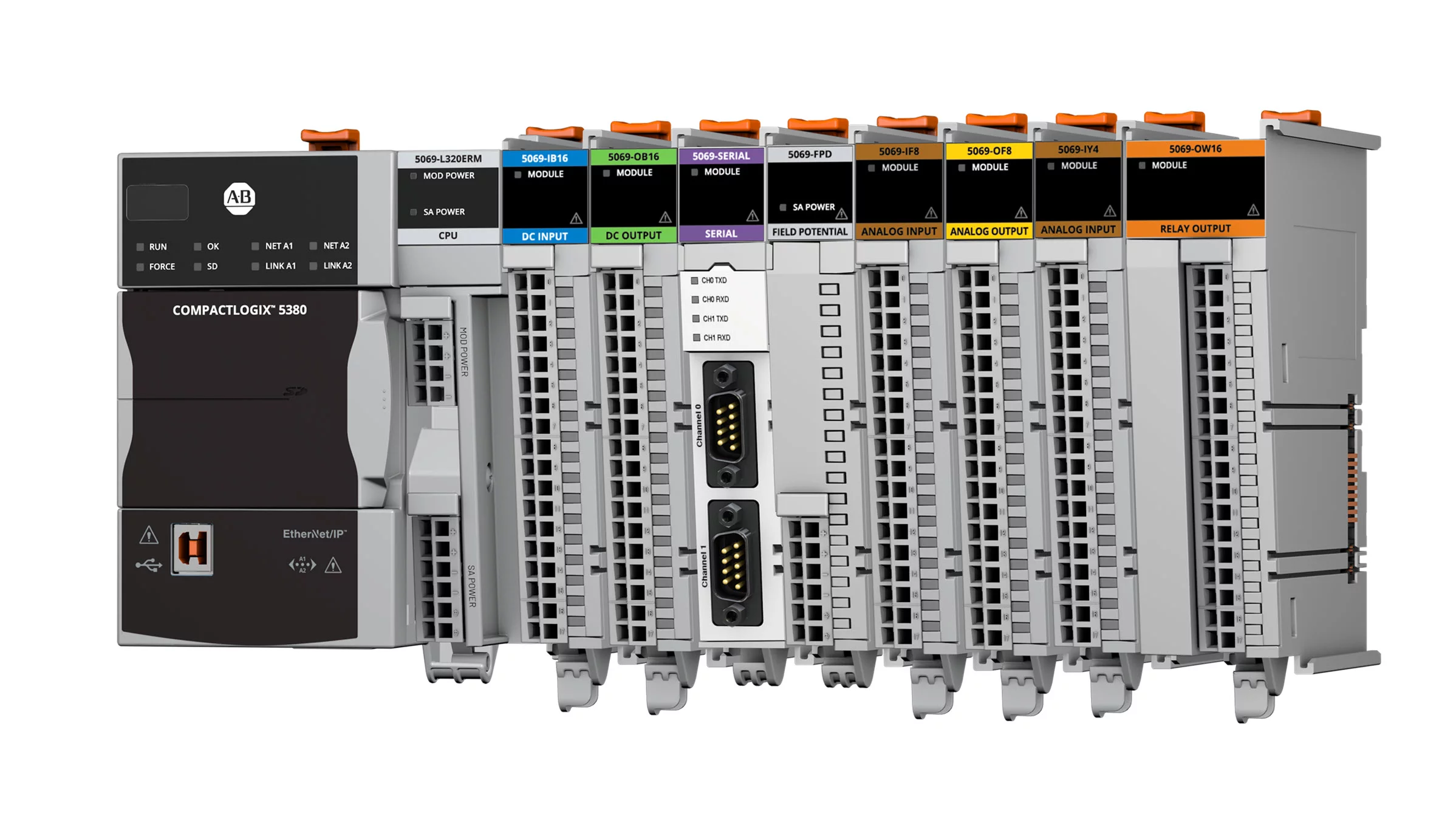
CompactLogix Controller Evolution: Which One Fits Your Automation Needs?
The CompactLogix series from Allen-Bradley has steadily evolved from modest, serial-based controllers to powerful, Ethernet-ready platforms capable of high speed motion control and distributed automation. Whether you're managing a standalone machine or scaling across an entire plant floor, selecting the right generation of CompactLogix controller is key to ensuring long-term reliability, flexibility, and performance.
This guide walks you through the evolution of the CompactLogix family so you can confidently choose the right model for your automation needs.
First Generation: 1769-L20 and L30 (5320 & 5330 Series)
Launched in the early 2000s, these were the entry-level CompactLogix controllers built for small applications. These models lacked Ethernet but served as a transitional bridge from MicroLogix to ControlLogix.
-
1769-L20: 64KB memory, 1x RS-232, max 8 I/O modules
-
1769-L30: 256KB memory, 2x RS-232, max 16 I/O modules
-
Protocols: DF1, ASCII, DH-485 (serial only)
-
Notes: Required proximity to a power supply (within 4 modules), shared 1769 I/O with MicroLogix 1500
These are ideal for legacy replacements, small test rigs, or basic serial-based applications.
Best for: Legacy or educational systems with minimal I/O and serial communication.
Second Generation: 1769-L31, L32E, L35E (L3x Family)
Introduced in 2003, this generation brought Ethernet capability, CompactFlash storage, and greater I/O scalability.
-
1769-L31: 512KB memory, 16 I/O modules, 1x RS-232
-
1769-L32E: 768KB memory, 30 I/O modules, built-in Ethernet
-
1769-L35E: 1.5MB memory, 30 I/O modules, multitasking support
-
Features: Key switch, CompactFlash for non-volatile memory, 4–8 task support
These became a workhorse across industries for reliable distributed control with minimal cost.
Best for: Mid-sized machine automation, Ethernet-based I/O, and general-purpose control.
Special Case: 1769-L23 Series (All-in-One CompactLogix)
Launched around 2008, the L23 series integrated the controller and I/O in one compact housing. It was cost-effective, space-saving, and easy to program but with tradeoffs.
-
1769-L23E-QB1B / L23E-QBFC1B: 512KB battery-backed volatile memory
-
Built-in I/O: 16 digital in/out, analog I/O (select models), HSC inputs
-
Ethernet support on select models
-
Limited expansion (2–3 additional modules)
Great for OEMs, packaging equipment, or HVAC where simplicity and low cost are key.
Best for: Compact machines with fixed I/O needs and low complexity.
Third Generation: 1768-L43 and L45 (L4x Series)
The L4x series brought ControlLogix-style performance to CompactLogix, including motion control via 1768-SERCOS modules and modular network support.
-
1768-L43: 2MB memory, 2x 1768 expansion slots, 16 I/O
-
1768-L45: 3MB memory, 4x 1768 expansion slots, 30 I/O
-
Supports motion, redundancy, and advanced diagnostics
-
Modules: 1768-ENBT (Ethernet), 1768-EWEB (web), 1768-CNB (ControlNet)
This is the go-to generation for coordinated motion, drives, and multi-network plant systems ideal for high-performance packaging, robotics, and process automation.
Best for: High-speed, motion-centric applications or multi-zone automation systems.
CompactLogix Controller Comparison Table
| Generation | Models | Ethernet Support | Memory | I/O Capacity | Motion Control | Non-Volatile Storage |
|---|---|---|---|---|---|---|
| Gen 1 | 1769-L20, L30 | No (serial only) | 64KB–256KB | 8–16 | ❌ | Yes (internal) |
| Gen 2 | 1769-L31, L32E, L35E | ✅ Built-in | 512KB–1.5MB | Up to 30 | ❌ | Yes (CompactFlash) |
| Gen 2.5 | 1769-L23 Series | Some models | 512KB | Up to 3 | ❌ | ❌ (Volatile only) |
| Gen 3 | 1768-L43, L45 | ✅ Modular via 1768-ENBT | 2MB–3MB | Up to 30 | ✅ (SERCOS) | Yes (CompactFlash) |
Final Takeaway: Matching Controller to Application
Choosing the right CompactLogix controller depends on application size, network requirements, I/O scale, and performance needs.
-
Go with Gen 1 for basic serial I/O systems or legacy replacements
-
Choose Gen 2 for standard Ethernet applications and multitasking
-
Pick Gen 2.5 for compact machines needing built-in I/O and minimal expansion
-
Select Gen 3 for motion, high-speed performance, and system-wide integration
For more information, contact PLG Automation:
Email: sales@plgautomation.com
Phone: 800-906-9271
